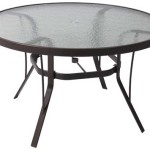Treating Wood For Raised Vegetable Beds: A Comprehensive Guide
Raised vegetable beds are an excellent way to elevate your gardening experience. However, to ensure their longevity and the safety of your plants, it's crucial to treat the wood used in their construction. Here's a comprehensive guide on how to treat wood for raised vegetable beds:
1. Material Selection:
Choose a durable wood species resistant to rot and decay, such as redwood, cedar, or cypress. Avoid using pressure-treated lumber, as it may contain chemicals harmful to plants.
2. Soil Contact:
Identify which wood surfaces will be in direct contact with the soil. These areas should be protected with a soil-resistant barrier or sealant.
3. Preservative Choice:
There are several types of wood preservatives available for raised vegetable beds. Here are the most common opciones:
- Non-toxic Preservatives: Plant-based oils, such as linseed oil or tung oil, are environmentally friendly options that penetrate the wood and provide moisture resistance.
- Chemical Preservatives: Borax, copper naphthenate, or zinc naphthenate are effective chemical preservatives that prevent rot and decay.
4. Preparation:
Before applying any preservative, ensure the wood is clean and dry. Remove any dirt, debris, or mildew with a wire brush or sandpaper.
5. Application:
Follow the manufacturer's instructions for applying the chosen preservative. Use a brush, roller, or spray gun to evenly distribute the preservative onto the wood surfaces.
6. Allow Penetration:
Give the preservative ample time to penetrate the wood, typically around 24-48 hours. Avoid using the raised bed during this period.
7. Final Sealant:
Once the preservative has penetrated, apply a final sealant or topcoat to protect the wood from moisture and UV rays. Consider using a water-based sealant to avoid off-gassing of fumes.
Conclusion:
By following these steps, you can effectively treat the wood for your raised vegetable beds and ensure their longevity and durability. Remember to choose safe materials, use proper application techniques, and regularly maintain your raised beds to extend their lifespan.

Build A Raised Garden Bed With Treated Wood Tague Lumber

Treated Wood In The Landscape Home Garden Information Center

How To Treat Wooden Raised Beds Owatrol

Wooden Raised Vegetable Beds To Preserve Or Not

How To Build A Rot Proof Garden Bed The Craftsman Blog

How To Create Raised Beds With Wood The Simple Secrets Success

Wooden Raised Vegetable Beds To Preserve Or Not

7 Ways To Make Wood Garden Beds Last Nontoxic Sealer More Homestead And Chill

Is Heat Treated Wood Safe For Gardening

Can You Use Pressure Treated Wood For Garden Beds








